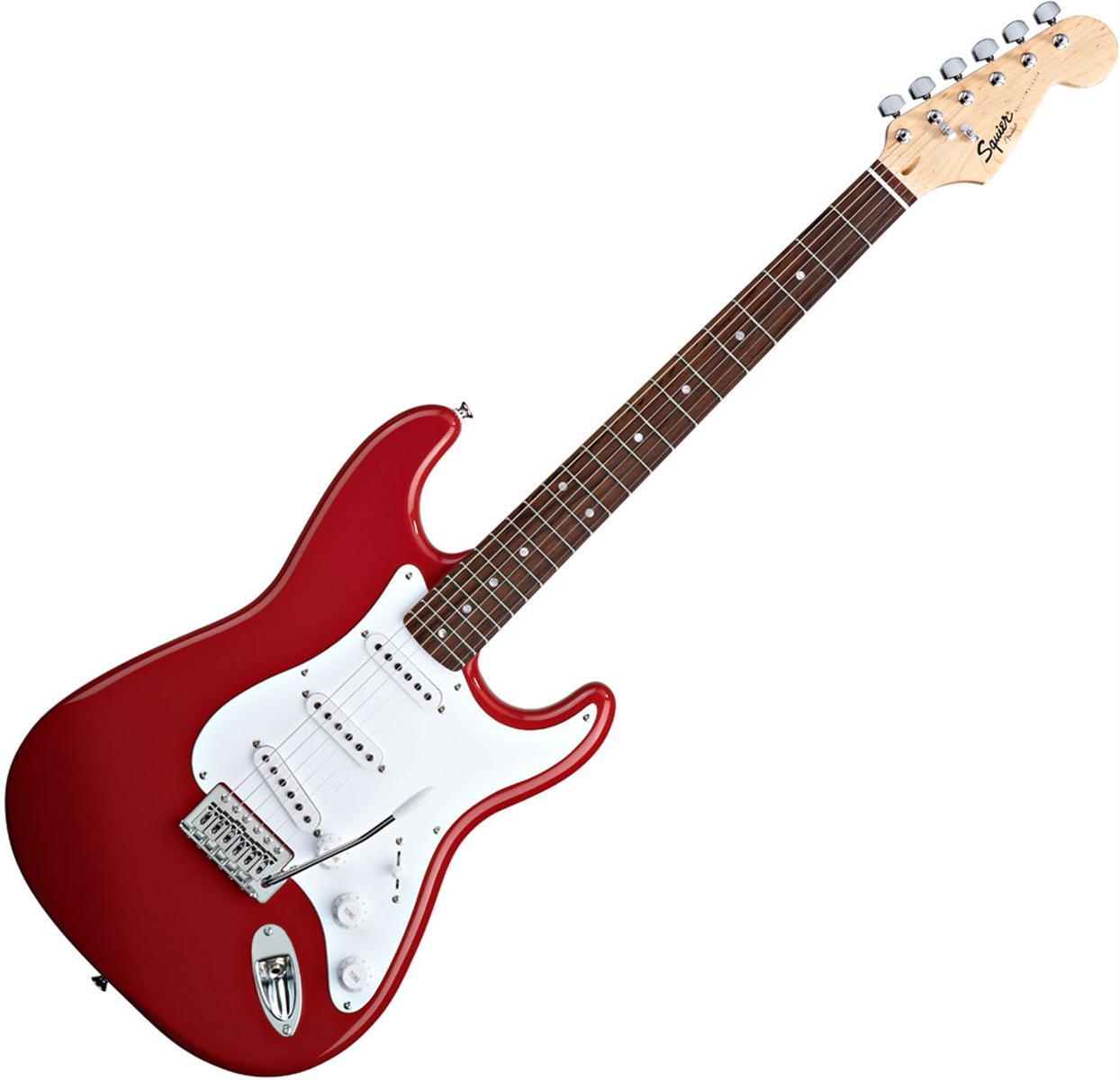|
Invented in 1931, the electric guitar became a necessity as jazz musicians sought to amplify their sound in the big band format. During the 1950s and 1960s,
the electric guitar became the most important instrument in pop music. It has evolved into a stringed musical instrument that is capable of a multitude of
sounds and styles. It served as a major component in the development of rock and roll and many other genres of music.
Various experiments at electrically amplifying the vibrations of a string instrument date back to the early part of the twentieth century. Patents from the 1910s
show telephone transmitters adapted and placed inside violins and banjos to amplify the sound. Hobbyists in the 1920s used carbon button microphones attached to
the bridge, however these detected vibration from the bridge on top of the instrument, resulting in a weak signal. With numerous people experimenting with
electrical instruments in the 1920s and early 1930s, there are many claimants to have been the first to invent an electric guitar.
Electric guitars were originally designed by guitar makers and instrument manufacturers. Some of the earliest electric guitars adapted hollow bodied acoustic
instruments and used tungsten pickups. The first electrically amplified guitar was designed in 1931 by George Beauchamp, General Manager at National Guitar
Corporation with Paul Barth who was Vice President. The maple body prototype for the one piece cast aluminum "Frying Pan" was built by Harry Watson, factory
superintendent of National Guitar Corporation. Commercial production began in late summer of 1932 by the Ro-Pat-In Corporation (Electro-Patent-Instrument
Company Los Angeles),a partnership of Beauchamp, Adolph Rickenbacker (originally Rickenbacher), and Paul Barth. By 1934 the company was renamed Rickenbacker
Electro Stringed Instrument Company.
The need for the amplified guitar became apparent during the big band era as orchestras increased in size, particularly when guitars had to compete with large
brass sections. The first electric guitars used in jazz were hollow archtop acoustic guitar bodies with electromagnetic transducers. By 1932 an electrically
amplified guitar was commercially available. Early electric guitar manufacturers include: Rickenbacker (first called Ro-Pat-In) in 1932, Dobro in 1933,
National, AudioVox and Volu-tone in 1934,Vega, Epiphone (Electrophone and Electar), and Gibson in 1935 and many others by 1936.
|
